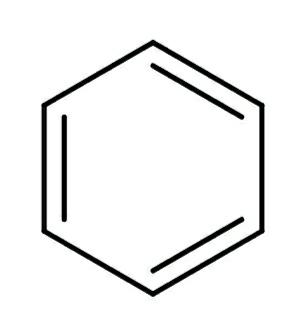
In benzene all
A.Tautomerism
B.
C.Isomerism
D.Resonance
Answer
493.5k+ views
1 likes
Hint: Benzene is an organic molecule. It is a resonance hybrid of various canonical structures. Resonance is the delocalization of electrons. Electron delocalization can stabilize benzene.
Complete step by step answer:
Benzene is an organic molecule having the molecular formula

All the carbon atoms are
According to the resonance concept, benzene is a resonance hybrid of the following structures.

The resonance explains the unusual stability of benzene. The resonance hybrid will have a lower energy than the contributing structures. The resonance energy of benzene is -150.5 kJ/mol.
The six mutually parallel unhybridized p orbitals will stand perpendicular to the hexagonal carbon ring and overlap sideways above and below the plane of the ring. Due to the delocalization of pi electrons all the carbon-carbon bonds of benzene have the same length.
Note: All the six carbon-carbon bonds in benzene have equal length. It is greater than carbon-carbon double bond length and lower than carbon-carbon single bond length. Carbon-carbon bond length in benzene is 1.39 angstrom. In contrast to alkenes benzene undergo substitution reactions rather than additional reactions. There are two resonance structures for benzene; these are kekule and dewar structures. Kekule structure has some limitations. It could not explain the remarkable stability of benzene towards strong oxidants like
Complete step by step answer:
Benzene is an organic molecule having the molecular formula

All the carbon atoms are
According to the resonance concept, benzene is a resonance hybrid of the following structures.

The resonance explains the unusual stability of benzene. The resonance hybrid will have a lower energy than the contributing structures. The resonance energy of benzene is -150.5 kJ/mol.
The six mutually parallel unhybridized p orbitals will stand perpendicular to the hexagonal carbon ring and overlap sideways above and below the plane of the ring. Due to the delocalization of pi electrons all the carbon-carbon bonds of benzene have the same length.
Note: All the six carbon-carbon bonds in benzene have equal length. It is greater than carbon-carbon double bond length and lower than carbon-carbon single bond length. Carbon-carbon bond length in benzene is 1.39 angstrom. In contrast to alkenes benzene undergo substitution reactions rather than additional reactions. There are two resonance structures for benzene; these are kekule and dewar structures. Kekule structure has some limitations. It could not explain the remarkable stability of benzene towards strong oxidants like
Latest Vedantu courses for you
Grade 9 | CBSE | SCHOOL | English
Vedantu 9 CBSE Pro Course - (2025-26)
School Full course for CBSE students
₹37,300 per year
Recently Updated Pages
Master Class 11 Economics: Engaging Questions & Answers for Success

Master Class 11 Business Studies: Engaging Questions & Answers for Success

Master Class 11 Accountancy: Engaging Questions & Answers for Success

Master Class 11 English: Engaging Questions & Answers for Success

Master Class 11 Computer Science: Engaging Questions & Answers for Success

Master Class 11 Maths: Engaging Questions & Answers for Success

Trending doubts
State and prove Bernoullis theorem class 11 physics CBSE

1 ton equals to A 100 kg B 1000 kg C 10 kg D 10000 class 11 physics CBSE

State the laws of reflection of light

One Metric ton is equal to kg A 10000 B 1000 C 100 class 11 physics CBSE

1 Quintal is equal to a 110 kg b 10 kg c 100kg d 1000 class 11 physics CBSE

Difference Between Prokaryotic Cells and Eukaryotic Cells




